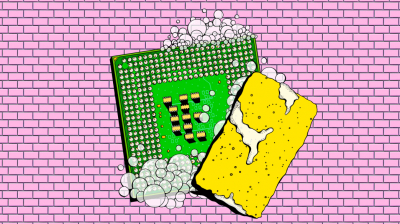Rejecting the Second Safe Injecting Room for Melbourne: Unveiling the Journey to this Decision
The Rejected Second Safe Injecting Room: Unraveling the Decision-Making Journey
The Victorian government's recent announcement reverberates with the decision to halt plans for a new trial facility, citing the inability to find a suitable site balancing the needs of drug users and the broader community. Despite recommendations and advocacy, a second safe injecting room for Melbourne has been rejected. Premier Jacinta Allan and Mental Health Minister Ingrid Stitt have opted for increased medical support for drug users, allocating $95 million towards health strategies, including establishing a new community health service on Flinders Street and bolstering community outreach teams.
Former Victoria Police commissioner Ken Lay's report, advocating for an injecting facility in the CBD due to the alarming death rate of drug injectors, underscored the urgency. However, the quest for a location that harmonizes diverse interests proved elusive.
So, how did we reach this juncture? A timeline of events sheds light on the trajectory:
2018-2019: Melbourne's first medically supervised injecting room commenced operations in June 2018, receiving positive feedback initially. However, concerns arose about clientele resorting to street drug use due to limited operating hours. The subsequent expansion of the North Richmond facility aimed to address these challenges.
2020-2021: The announcement of a second safe injecting room near Melbourne's Queen Victoria Market sparked debate, with the City of Melbourne initially opposing the proposal. Reports later surfaced about Flinders Street as a potential site, eventually gaining support from Melbourne Council.
2023: Despite ongoing discussions and efforts, the rejection of the second safe injecting room stands as a testament to the complexities surrounding public health initiatives and community integration.
As Melbourne navigates these dynamics, the pursuit of effective strategies to support vulnerable populations remains paramount, highlighting the intricate balance between compassion, public safety, and community cohesion.
Debating the Future of Safe Injecting Rooms in Australia: Perspectives on Public Health and Safety
The recent developments surrounding safe injecting rooms in Victoria have sparked heated discussions about their efficacy and necessity. In March, the state government's decision to make the North Richmond safe injecting room permanent marked a significant milestone in harm reduction efforts. Following rigorous debate, the bill securing its permanence passed the upper house, affirming its crucial role in saving lives and safeguarding the public.
However, as discussions turned to the prospect of establishing a second supervised injecting room in Melbourne's CBD, opinions diverged. In May, Ken Lay's final report shed light on potential trial sites, including a Salvation Army hub on Bourke Street. Advocates argue that such facilities are indispensable in addressing the pressing issue of drug addiction and preventing overdose fatalities.
Yet, the Victorian government's recent announcement rejecting the establishment of a second supervised injecting room in Melbourne underscores the complexities involved. Premier Jacinta Allan and Health Minister Ingrid Stitt cited challenges in finding a suitable location that balances the needs of drug-dependent individuals with broader community concerns.
The release of Lay's report in February further fueled the debate, revealing mixed sentiments among the public. While some acknowledged the pressing drug problem in the city, others expressed reservations about the necessity of supervised injecting services. With 52% of respondents opposing the idea and 40% in favor, it's evident that divergent perspectives exist regarding the appropriate policy and community response.
As the discourse continues, the question remains: Should there be more safe injecting rooms in Australia? Advocates argue for their life-saving potential and harm reduction benefits, while skeptics raise concerns about community integration and effectiveness. Amidst these debates, finding common ground that prioritizes both public health and community well-being is paramount.
In conclusion, the debate surrounding the expansion of safe injecting rooms in Australia encapsulates the nuanced intersection of public health, safety, and community dynamics. While the permanence of the North Richmond facility signifies progress in harm reduction efforts, the rejection of a second supervised injecting room in Melbourne underscores the challenges in striking a balance between addressing the needs of vulnerable individuals and addressing community concerns.
As stakeholders continue to grapple with divergent viewpoints and policy considerations, it is essential to engage in constructive dialogue that prioritizes evidence-based approaches and empathy. Recognizing the complex nature of addiction and its impact on individuals and communities, finding common ground requires a multifaceted approach that integrates perspectives from public health experts, community leaders, and affected individuals.
Moving forward, fostering collaboration and understanding will be essential in navigating the complexities of drug policy and harm reduction initiatives. By working together to address the root causes of addiction and prioritize the well-being of all members of society, Australia can forge a path towards a more compassionate and effective approach to drug policy.







